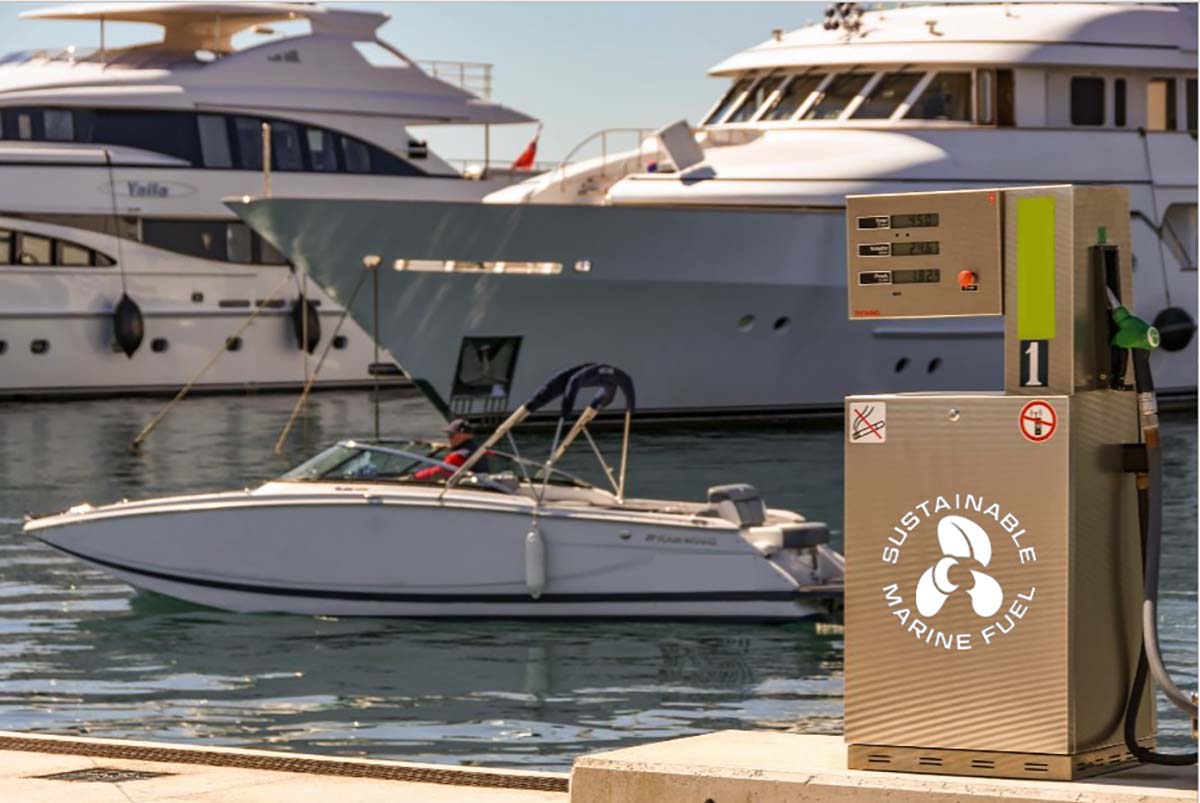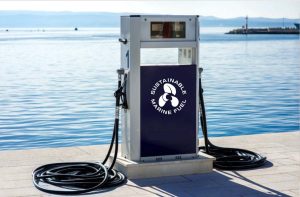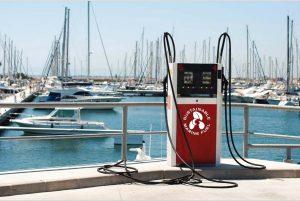
Sustainable Fuel for the Marine Industry
Published on May 2, 2024Editor’s Note: To learn more about the differences between biobutanol and ethanol, go to
https://www.abetterbiofuel.com/copy-of-publications-and-approval.
Not all fuel is created equal. What’s good for a car may not be as good for a boat…or for the environment. That’s why there is an industry-wide focus on creating sustainable fuels for the marine industry. This initiative is one of several that the National Marine Manufacturers Association is promoting, with the primary purpose of reducing greenhouse gas emissions. These new fuels, primarily made from plant materials, can be utilized with existing boats, making them a lower-cost alternative for environmentally conscious consumers as opposed to purchasing a new, hybrid or electric-powered boat.
“The fuels we’re using now were created in the 70s and haven’t changed much since then, but now with the focus on renewable content, we’re seeing some changes in the way fuels can be made,” said Jess Hewitt, president of Hyperfuels, a Texas-based company that develops boutique fuels.
Hyperfuels has been working on a gasoline formulation that is more sustainable and that uses renewable content to avoid the problems that arise from fuels with ethanol. “We call it a hygroscopic product; that means it will extract moisture from the atmosphere 24/7. Ethanol works great in our cars because we have sealed fuel systems, but not in boats because boats are in the environment of moisture and water, which can affect the ethanol to the point where it becomes saturated with moisture and separates from the gasoline. It creates lower octane gasoline and doesn’t run the engine well, potentially causing engine damage,” Hewitt explained.
Hyperfuels’ Product
Over the years there has been an advancement and innovation in sustainable marine fuels for the recreational boating industry. What is driving this trend now is the interest in decarbonatization: the reduction of carbon dioxide emissions into the atmosphere. “That is the bonus with these fuels. They are easier to make, with lighter components. This will help you decarbonize and therefore is more sustainable,” Hewitt said.

Hyperfuels’ goal was to develop a gas that would not absorb moisture, had more energy content than ethanol-based gasoline, was partially renewable and would give better performance for gasoline engines. The result was PurFuels®, made with renewable oxygenates—fuel additives that contain oxygen that replace traditional ethanol. The primary material is biobutanol, which can reduce carbon emissions by up to 30% as compared to conventional gasoline with ethanol.
Often, new fuels cannot be put into an existing tank, but PurFuels ® are drop-in gasolines, meaning that they can go into existing equipment without any change in the hardware settings that run the engines. “That is how we distinguish ourselves. What can you do today to reduce the carbon you are emitting without changing your equipment? Here it is,” said Hewitt. This compatibility factor is good news for the more than 12 million registered powerboats, 75% of which were manufactured prior to 2010. In a fact sheet, the NMMA noted, “Using sustainable marine fuels in the legacy fleet will significantly lower CO2 emissions immediately without waiting for fleet turnover.”
Advantages of Sustainable Fuels
According to the U.S. Department of Energy’s Bioenergy Technologies Office, international maritime transport accounts for approximately 3% of global greenhouse gas emissions, which includes recreational boats.
An NMMA fact sheet stated, “Further reductions in CO2 emissions though the use of sustainable fuels, and e-fuels, have the potential to reach carbon neutrality. Support of these fuels demonstrated today will enable important future reductions which are strategic in our ability to minimize CO2 emissions.”
Ethanol-free fuels not only reduce carbon output but give better performance with the engine. “It is astounding to me, because there’s only 3% more power in the fuel but we were getting reports of 10 to 13% better performance or mileage,” Hewitt said. “They’re also better for equipment that sits around a lot—if you have a boat, that boat is sitting more than it’s being used.”
Besides the environmental benefits, this fuel will extend the life of the boat, as it is more stable than traditional fuel. However, it is more expensive than ethanol fuels—about a dollar more per gallon—but many people who use these fuels believe that it is a reasonable value.
High Demand
When Hyperfuels got into this market, Hewitt expected that the demand would stop with boaters, so they initially approached marinas, but they were pleasantly surprised at the response. “I then sent emails out to distributors, and one company—a small convenience store operator—replied within eight minutes and said that they wanted it. So, we started placing it in gas stations,” Hewitt said. Other interested customers included people with older vehicles, or even those who wanted it for their leaf blowers or snowmobiles. “They all had the same thing in mind: ‘Our engines are not designed for this fuel; we need something that will last longer and will not go bad in the tank.’”
The company is working with marinas to offer PurFuels ®. In Texas, especially, they have sold it to quite a few marinas; it is the premium tank product. They are starting to work with marinas outside of Texas as well. To date, despite it being a dollar more per gallon, the demand is there. But other alternate fuel products are even more expensive.

The product is specifically made for reformulated gasoline areas—places in the country in which the EPA has designated the air quality as not meeting minimum standards; there are special provisions in those areas for gasoline to contain oxygenate. “We’ve made this gasoline to meet those requirements and that means it can be used almost anywhere in the eastern half of the country,” Hewitt said.
Interested marinas do not have to do much to market this product because, according to Hewitt, there is an ‘internal marketing system’ created by users who are proponents of ethanol-free gasoline. “The people that want and buy this gasoline created their own app for their own use. It’s called Pure-gas.org; it’s an app on a phone and when you plug it in, it tells you everybody in the area that sells this kind of fuel,” he said.
Hyperfuels also does promotions at marinas a few times a year, specifically, a video that shows people what happens to ethanol when it is left out in the open for 20 minutes as compared to the company’s ethanol-free product. (Spoiler alert: ethanol draws in moisture in a glass, while the ethanol-free gas produces no moisture on either side of the glass).
“If I had any advice to marina owners, I’d say, you need to look at this product, because the people who want it are not coming to your facility because you don’t have it,” Hewitt said. “They know where it is, and they are going to those instead.”
| Categories | |
| Tags |






